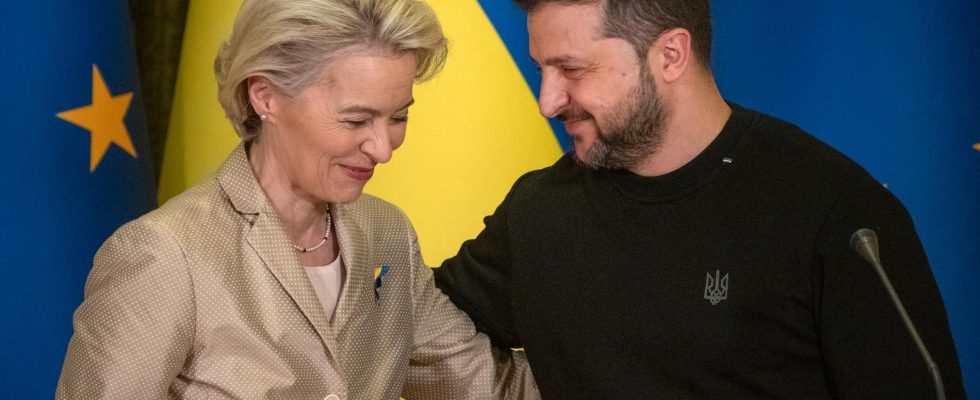Save the article
full screen
Next
European Commission President Ursula von der Leyen visiting Ukrainian President Volodymyr Zelenskyj in Kiev on Saturday. Stock photo.
1 / 2Photo: Efrem Lukatsky/AP/TT
Ten years after the last enlargement, the pressure to make the EU grow again is increasing – above all with Ukraine. But getting today’s member states to say yes will not be easy.
Money to Hungary may be required for a clearance.
Not since Croatia was admitted from 1 July 2013 has the EU received a new member, despite many applications and long negotiations. Doubt has been great in the western parts of the EU above all about the economic and migration consequences.
However, Russia’s war in Ukraine has created a completely new situation. Now it’s not just about expanding a market, but also about concretely defending the neighbors’ independence from Moscow.
Nevertheless, it will still be a long time before any EU expansion really takes place.
Hungarian skepticism
First of all, it is necessary to start formal membership negotiations with everyone. Already there is a first major obstacle.
To start, unanimity is required among current members, which is not easy to achieve. Above all, there is skepticism in Hungary about Ukraine – formally focused on dissatisfaction with the way the rulers in Kiev deal with the country’s Hungarian minority.
On the other hand, the Hungarian resistance is seen primarily as a negotiating tactic to get the rest of the EU to hand over the multi-billion sums withheld due to concerns about corruption, the rule of law and democracy in Hungary.
The EU Commission is expected to propose in the autumn that at least part of the money to Hungary can be paid out. But whether it is enough remains to be seen. On the one hand, the protests will be strong in the EU Parliament and some EU countries, and on the other hand it may happen that for the time being Hungary “just” lets go of its opposition to increased economic and military support to Ukraine – two other decisions that are also stuck because of Hungarian No.
Phased in?
The next step will be to decide what kind of EU the applicant countries will be allowed to join. For example, is there enough money to continue the same kind of agricultural support, even if it were to go largely to Ukraine’s huge agricultural sector? And can one continue to give each country the right of veto on various issues, without making it impossible to reach a decision? The fear is great that the EU will be paralyzed in the same way as the UN Security Council.
Here, an intensive discussion is expected in the EU in the coming years to set out the direction. Germany and France are already taking steps to make the EU more manageable.
In order not to cause the applicant countries to despair, proposals are also expected to gradually allow them into various forms of cooperation and ministerial meetings.
– We must ensure that the people of these countries, especially the young, get a chance to take part in the EU’s benefits early on, even before the countries are full members, urged German Foreign Minister Annalena Baerbock at a meeting in Berlin last week.
FACTS They are in the queue
A large number of countries in the Western Balkans and in Eastern Europe are in the EU’s waiting room, hoping for future membership:
* Serbia and Montenegro have been negotiating since 2014 and 2012, respectively, but still have a long way to go to meet all requirements.
* Albania and North Macedonia were given the go-ahead to start negotiations in 2022, but in practice have not yet started.
* Ukraine, Moldova and Bosnia and Herzegovina were recognized as candidate countries in 2022 and are awaiting word on the start of negotiations.
* Kosovo and Georgia applied for membership in 2022, but are still waiting to even be approved as candidate countries.
* With Turkey, the EU in turn started negotiations as early as 2005, although the process has been frozen since 2016.
Read more
